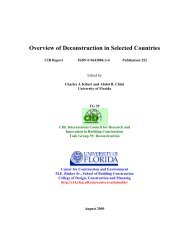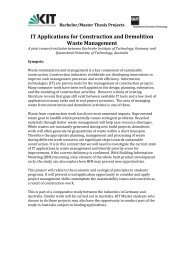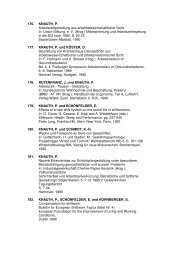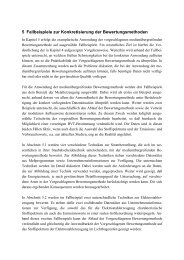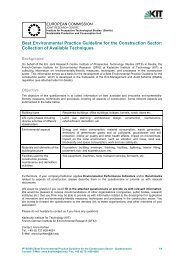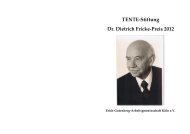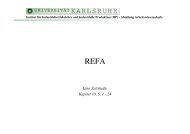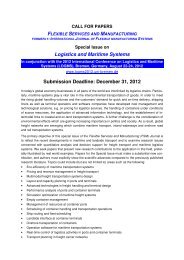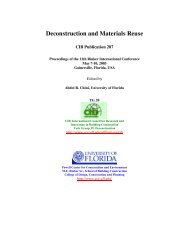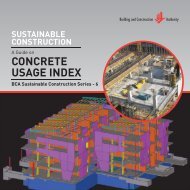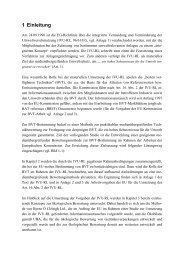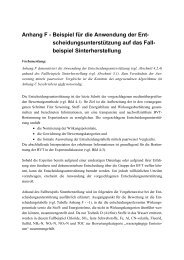Waste reduction final report -4 - Test Input
Waste reduction final report -4 - Test Input
Waste reduction final report -4 - Test Input
Create successful ePaper yourself
Turn your PDF publications into a flip-book with our unique Google optimized e-Paper software.
Directly on the construction sites, the materials are separated as to the widely accepted multi<br />
dell concept. Disposal methods include direct use on construction site, indirect use,<br />
landfilling and incineration. We can see that there are six main recycling materials dealt with<br />
in Switzerland: three granules and three recycling gravel types. Their allowed composition is<br />
defined by the guideline for mineral construction waste by the FOEN. A summary is shown<br />
in Table 5. If the above mentioned materials are not recycled into granules, they are often<br />
crushed and used as alternative for gravel/sand in civil engineering.<br />
Table 5: Quality standards for the six mineral recycling materials [FOEN 2006].<br />
<strong>Waste</strong><br />
category /<br />
Secondary<br />
material<br />
Recycled<br />
asphalt<br />
aggregates<br />
RC gravel<br />
sand P<br />
RC gravel<br />
sand A<br />
RC gravel<br />
sand B<br />
Recycled<br />
concrete<br />
aggregates<br />
Asphalt<br />
Gravel/Sand Concrete<br />
demolition<br />
Mixed<br />
demolition<br />
90 10 2 0.3 28<br />
4 95 4 1 0.3<br />
20 80 4 1 0.3<br />
4 80 20 1 0.3<br />
3 29 95 2 0.3<br />
Recycled<br />
mixed<br />
aggregates 3 97<br />
Impurities<br />
0.3<br />
without<br />
gypsum +<br />
1%<br />
gypsum<br />
Reading example: Recycled asphalt aggregates have to contain at least 90% of asphalt.<br />
Further percentages of materials have to be fulfilled approximately.<br />
The Swiss Association on excavation earth, deconstruction and recycling (ARV) collects data<br />
from its members with the help of inspections. Latest sales volumes of recycled materials are<br />
presented in Table 6 [ARV 2009]. Please note that (a) there are a few cantons in which there<br />
are no inspections made and (b) only materials complying with the official quality guidelines<br />
are captured. Additionally, the FSKB estimates a total sales volume of 5 MT of recycling<br />
material per year for its members [FSKB 2009]. Materials directly reused on the construction<br />
site are not included. As a result of these conditions, the data are implicitly to be taken as<br />
approximate values and do not represent the whole business market!<br />
28 Recycled asphalt aggregates being used with hot processing musn’t contain impurities.<br />
29 Recycled concrete aggregates being added to classified concrete musn’t contain asphalt.<br />
100



